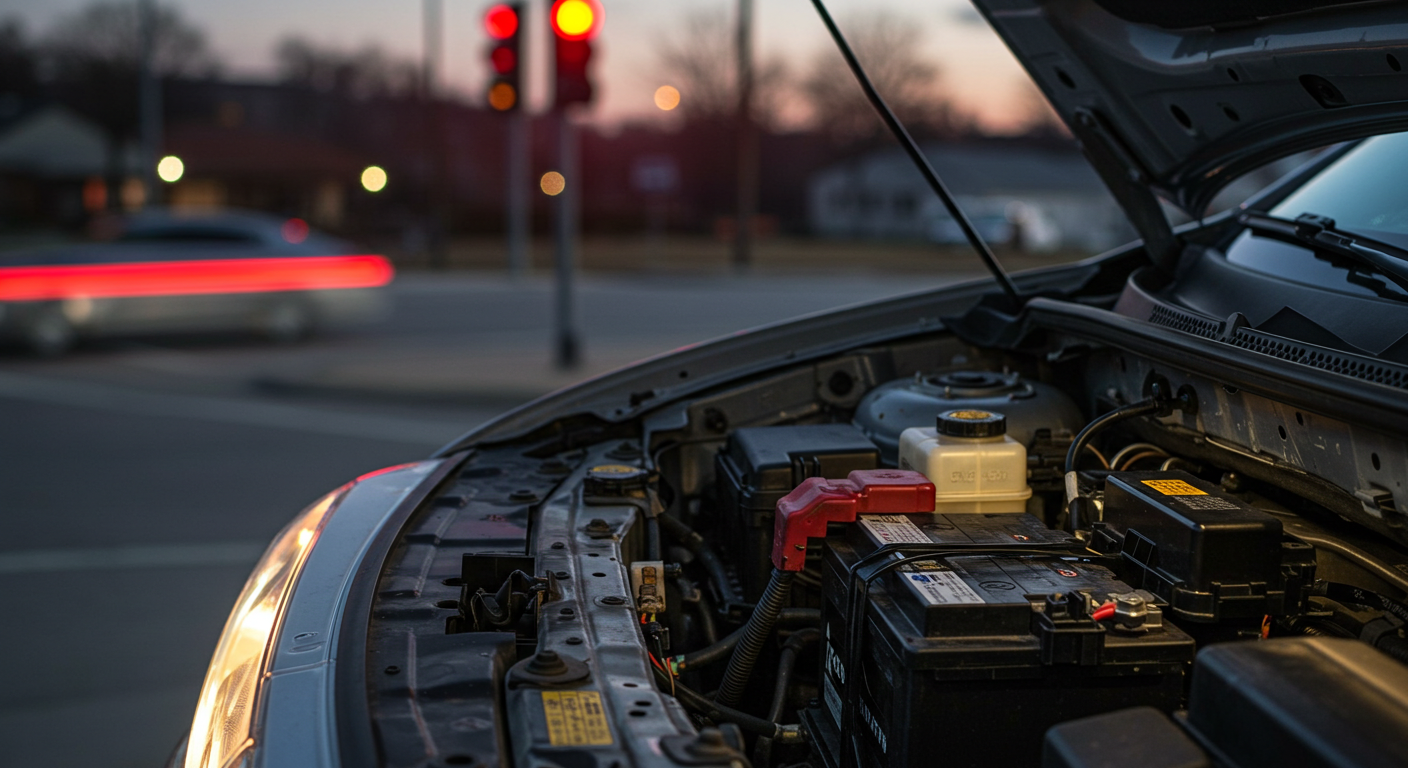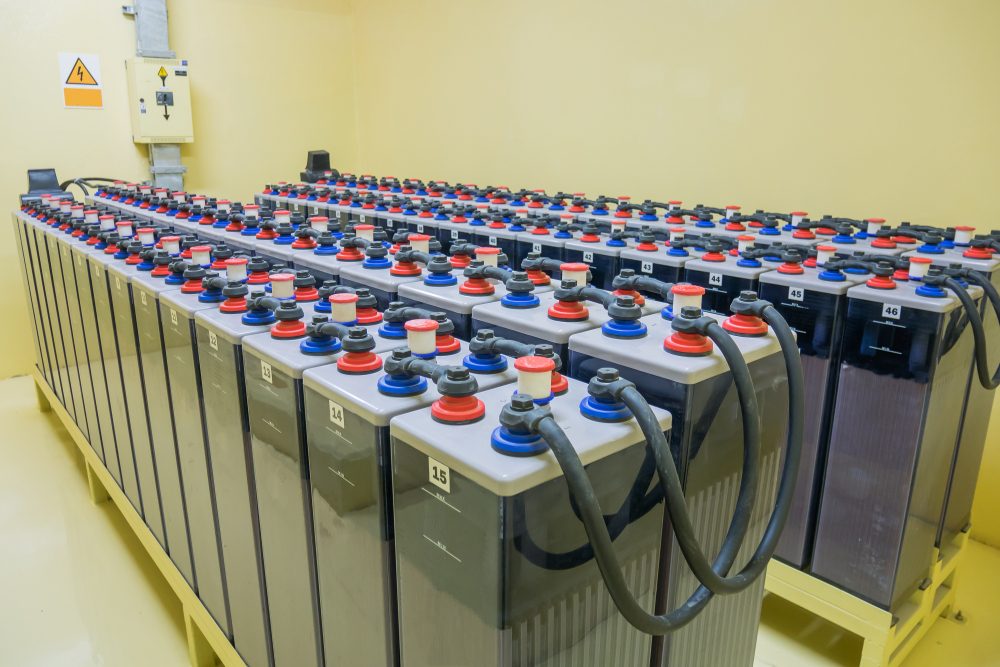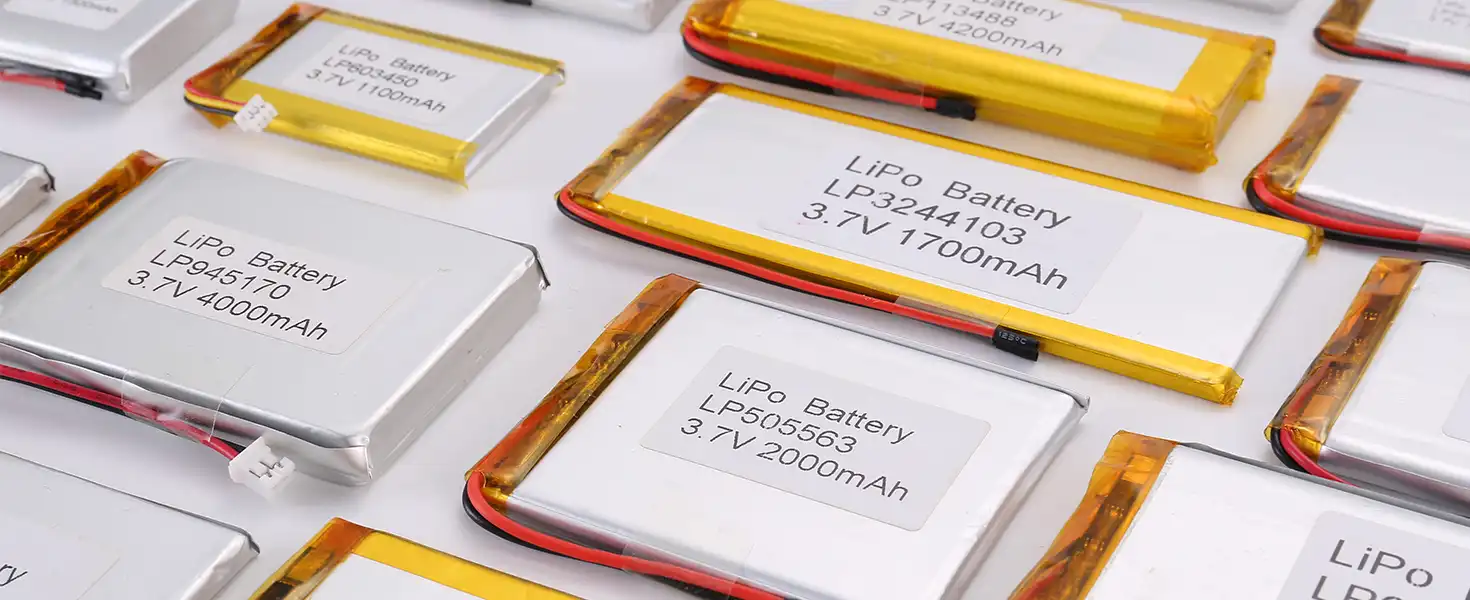The landscape of energy storage is undergoing a profound transformation in 2025, as lithium-ion battery technology continues to revolutionize industries worldwide. At VADE Battery, we’ve witnessed firsthand how these advancements are reshaping the way we power our world—from portable electronics to industrial applications. This comprehensive analysis examines the latest developments in battery technology and their far-reaching impacts across major sectors.
The Evolution of Energy Storage: From Alkaline to Advanced Lithium Chemistries
The journey of battery technology has been remarkable—evolving from rudimentary lead-acid batteries invented in 1859 to today’s sophisticated lithium-ion powerhouses. This evolution represents not just incremental improvements but fundamental shifts in how we store and utilize energy.
Traditional vs. Modern Battery Technologies
The limitations of conventional batteries became increasingly apparent as our technological demands grew. Alkaline batteries, while reliable for basic applications, faced significant constraints in energy density, rechargeability, and lifespan. The introduction of lithium-ion technology in the 1990s marked a pivotal moment, offering substantially improved performance metrics across all key parameters.
| Battery Type | Energy Density | Cycle Life | Temperature Range | Self-Discharge Rate |
|---|---|---|---|---|
| Alkaline | 80-100 Wh/kg | Single use | 32°F to 77°F | 2-3% monthly |
| Lead-Acid | 30-50 Wh/kg | 200-300 cycles | 5°F to 122°F | 3-20% monthly |
| Lithium-Ion | 250-300 Wh/kg | 800-1,000 cycles | -40°F to 140°F | <5% monthly |
| Solid-State (2025) | Up to 400 Wh/kg | 2,000+ cycles | -76°F to 176°F | <2% monthly |
The performance gap between traditional batteries and modern lithium chemistries continues to widen. Lithium batteries outperform alkaline alternatives in approximately 80% of use cases, offering three times higher energy density and lasting 3-7 times longer. This dramatic improvement has enabled the miniaturization of devices while simultaneously enhancing their capabilities and runtime.
Chemical Composition and Working Principles
Modern lithium-ion batteries utilize a sophisticated chemical architecture. During charging, lithium ions move from the positive electrode (cathode) through an electrolyte to the negative electrode (anode), typically made of graphite or other carbon-based materials. This process stores energy that’s later released during discharge when ions flow back to the cathode, generating electrical current.
The cathode material—often lithium metal oxides like LiCoO₂, LiFePO₄, or LiMn₂O₄—significantly influences a battery’s performance characteristics. These variations in chemistry allow manufacturers to optimize batteries for specific applications, balancing factors like energy density, power output, lifespan, and safety.
Learn more about the fundamentals of these technologies in our lithium-ion battery basics guide.
Industry Transformation: Five Sectors Being Revolutionized by Li-ion Technology
Lithium-ion technology is fundamentally reshaping multiple industries, driving innovation and enabling new capabilities that were previously impossible with conventional power sources.
1. Electric Vehicles: Driving Sustainable Transportation
The automotive sector represents perhaps the most visible transformation powered by lithium-ion technology. The electric vehicle revolution continues to accelerate in 2025, with battery advancements addressing key adoption barriers.

Range and Charging Improvements
The latest battery innovations are effectively eliminating “range anxiety”—one of the primary concerns for potential EV buyers. Advanced lithium-ion batteries now enable ranges exceeding 400 miles on a single charge in premium models, while even entry-level EVs commonly achieve 250+ miles.
Charging times have seen dramatic reductions, with some of the newest battery technologies reducing full charging times to just 10 minutes, compared to the 30-45 minutes required by previous generations. This breakthrough represents a fundamental shift in EV practicality, making electric vehicles nearly as convenient as traditional combustion engine vehicles for long-distance travel.
Market Growth and Cost Trends
The cylindrical lithium-ion battery market, critical for EVs, is valued between $15-17 billion in 2025 and projected to reach $23-26 billion by 2030, representing a CAGR of 7.5-9%. This growth reflects both increasing EV adoption and expanding applications across other sectors.
Regional EV battery development continues to evolve, with Asia Pacific growing at 8.0-9.5% (led by China and South Korea), North America at 7.0-8.5% (with U.S. focus on power tools and EVs), and Europe at 7.5-9% (with Germany emphasizing sustainability).
2. Renewable Energy Storage: Enabling the Clean Energy Transition
The intermittent nature of renewable energy sources like solar and wind has historically limited their reliability. Lithium-ion storage systems are providing the critical missing piece—effectively capturing excess energy during peak production periods for use when generation decreases.

Grid-Scale Implementation
Large-scale battery installations are transforming how electrical grids operate, providing stability and flexibility while reducing reliance on fossil fuel backup generation. These systems enable:
- Peak demand management
- Frequency regulation
- Grid stabilization
- Emergency backup power
- Renewable energy time-shifting
The integration of AI and smart battery management systems further enhances these capabilities, optimizing energy dispatch and storage based on complex predictive algorithms.
Residential and Commercial Applications
Beyond utility-scale installations, lithium battery technology is revolutionizing how homes and businesses interact with the energy grid. Advanced LiFePO₄ battery systems now commonly provide 10+ years of reliable operation, making them economically viable for residential solar storage and backup power applications. Learn more about LiFePO₄ cell balancing for optimal performance in these systems.
3. Medical Devices: Enhancing Patient Care
The medical sector is embracing lithium-ion technology to power increasingly sophisticated devices that improve and save lives. The reliability, longevity, and compact size of these batteries are enabling new treatment approaches and enhanced patient mobility.

Critical Life-Supporting Equipment
Lithium-ion batteries power a wide range of medical devices, including:
- Portable oxygen concentrators
- Insulin pumps
- Cardiac monitors and pacemakers
- Ventilators
- Surgical tools
- Diagnostic equipment
For patients with chronic conditions, the extended battery life and reduced maintenance requirements translate directly to greater independence and fewer disruptions to critical care regimens. Our custom lithium polymer batteries have proven particularly valuable for medical applications requiring flexible form factors and high safety standards.
Technological Innovations in Implantable Devices
Advanced lithium battery chemistries are enabling a new generation of implantable medical devices with unprecedented longevity. These devices can now operate for 7-10 years without replacement, significantly reducing the need for invasive surgical procedures and improving patient quality of life.
4. Telecommunications: Ensuring Continuous Connectivity
The telecommunications industry depends on reliable power backup systems to maintain network operations during outages. Lithium-ion batteries have transformed this sector by providing longer backup times in smaller, lighter packages compared to traditional lead-acid solutions.

Network Infrastructure Reliability
Cell towers, data centers, and critical network infrastructure benefit significantly from lithium battery technologies, particularly our 48V LiFePO₄ battery systems. These installations require:
- Extended backup time during power interruptions
- Reduced maintenance requirements
- Longer service life
- Smaller physical footprint
- Remote monitoring capabilities
The telecommunications industry’s shift from lead-acid to lithium-ion backup power has reduced infrastructure footprints by up to 70% while extending backup durations—critical improvements as networks become increasingly essential for emergency services and economic activity.
5. Consumer Electronics: Powering Our Connected World
Consumer electronics represent the original driving force behind lithium-ion battery development, and this sector continues to benefit from ongoing advancements in energy storage technology.

Portable Device Evolution
The dramatic improvements in lithium battery performance have enabled the development of increasingly sophisticated portable electronics, including:
- Smartphones with multi-day battery life
- Laptops achieving 20+ hours of operation
- Wearable technology with week-long runtimes
- High-performance drones and cameras
- Portable gaming systems
Our 18650 lithium-ion battery packs have been instrumental in enabling manufacturers to create increasingly powerful devices while maintaining or even reducing device size. Understanding the differences between battery cell types is crucial for optimizing performance in various applications—learn more in our 18650 vs. 26650 battery specs comparison.
Smart Home and IoT Applications
Beyond portable devices, lithium batteries are powering the expanding ecosystem of smart home devices and Internet of Things (IoT) sensors. These applications benefit particularly from the long shelf life and low self-discharge rates of modern lithium chemistries, enabling devices to operate for years without battery replacement in low-power applications.
Key Battery Innovations Driving the 2025 Market
The battery technology landscape continues to evolve rapidly, with several key innovations poised to reshape the market in 2025 and beyond.
Solid-State Battery Commercialization
Solid-state batteries represent one of the most significant battery innovations in decades, replacing liquid electrolytes with solid alternatives. This fundamental redesign offers multiple advantages:
Performance Advantages
- Higher Energy Density: Solid-state batteries are expected to surpass 400 Wh/kg by 2025, compared to 250-300 Wh/kg for traditional lithium-ion batteries
- Longer Cycle Life: These batteries can achieve 2,000+ charge cycles, more than double the 800-1,000 cycles typical of conventional lithium-ion
- Improved Safety: By eliminating flammable liquid electrolytes, solid-state designs dramatically reduce fire risks
Commercial Progress
Major manufacturers are making significant strides toward commercialization. Toyota aims to launch its first solid-state EV by 2025, initially focusing on premium models with high range and fast charging capabilities. Other companies like QuantumScape are targeting niche markets such as aviation and military applications, where the benefits of ultra-lightweight, high-energy-density designs justify premium pricing.
Despite promising developments, challenges remain in scaling production. Current manufacturing facilities have limited capacity, and interfacial stability between solid electrolytes and electrodes presents ongoing technical hurdles.
Sodium-Ion Battery Development
Sodium-ion batteries are emerging as a cost-effective alternative to traditional lithium-ion technology, addressing concerns about lithium supply chain vulnerabilities and environmental impact.
Economic and Supply Chain Advantages
The primary advantage comes from material abundance—sodium is vastly more plentiful than lithium, found abundantly in seawater and the Earth’s crust. This translates to dramatically lower raw material costs, with sodium costing approximately 5 cents per kilogram compared to lithium at around $15 per kilogram.
This cost advantage could significantly reduce electric vehicle prices, potentially cutting battery costs by up to a third. The technology has already gained commercial traction, with initial electric vehicle applications launched in 2023.
For applications where weight is less critical, sodium-ion technology offers a compelling alternative to lithium-ion. Learn more about different battery chemistries in our lithium battery types comparison guide.
Advanced Electrode Materials
Material innovations are dramatically improving battery performance across all key metrics. Silicon-carbon composite anodes are increasing battery capacity by approximately 30%, reducing reliance on traditional graphite materials. This technology is seeing rapid adoption, growing from 12% market share in 2023 to an expected 25% by the end of 2025.
Simultaneously, cobalt-free cathodes like nickel-manganese (LiNiMnO₂) are gaining traction, with market adoption forecasted to exceed 40% by year-end. These materials reduce dependency on cobalt—a material associated with significant supply chain and ethical concerns—while maintaining or improving performance.
Energy Density Improvements
Battery energy density continues its impressive upward trajectory. Since 2012, top-tier energy density has increased by approximately 18% for every doubling of battery deployment. This improvement enables manufacturers to develop EVs with enhanced range and performance while reducing battery size and weight.
The average battery pack capacity for newly manufactured EVs has increased from approximately 40 kWh in 2018 to over 60 kWh in 2025, while the physical space required for these larger batteries has decreased. This trend is expected to continue as new electrode materials and cell designs reach commercial implementation.
Our energy density batteries guide provides a deeper look at how these improvements are affecting various applications.
AI and Smart Battery Management
Artificial intelligence is transforming battery technology by enabling sophisticated monitoring and optimization capabilities. AI-powered battery management systems (BMS) can:
- Predictive Maintenance: Identify potential failures before they occur
- Charging Optimization: Adapt charging profiles based on battery condition and usage patterns
- Lifecycle Extension: Balance cells and manage thermal conditions to maximize battery lifespan
- Performance Tuning: Adjust power delivery to match application requirements in real-time
These intelligent systems represent a major advancement over traditional BMS approaches, potentially extending battery life by 15-30% while enhancing safety and reliability.
Environmental Impact and Sustainability Considerations
As lithium-ion battery adoption accelerates, addressing environmental challenges becomes increasingly important. The battery industry is making significant strides toward more sustainable practices across the entire lifecycle.
Lifecycle Assessment: Benefits of Longer-Lasting Batteries
One of the most significant environmental advantages of lithium-ion batteries is their extended lifespan. With lithium batteries lasting 3-7 times longer than alkaline alternatives, this translates directly to reduced waste and resource consumption.
A comprehensive lifecycle assessment of lithium-ion batteries reveals their environmental advantages compared to traditional battery technologies:
- Greenhouse Gas Reduction: Each lithium-ion battery effectively replaces multiple shorter-lived batteries, reducing manufacturing emissions associated with production
- Resource Conservation: Fewer batteries produced means less raw material extraction and processing
- Waste Reduction: Extended lifespans translate directly to less waste entering landfills
For organizations seeking to minimize environmental impact, understanding the differences between lithium and alkaline batteries is essential.
Recycling Challenges and Innovations
The end-of-life management of lithium-ion batteries presents both challenges and opportunities. Recent research published in Nature Communications demonstrates that recycling lithium-ion batteries to recover critical metals has significantly lower environmental impacts than mining virgin materials:
- 58-81% lower greenhouse gas emissions
- 72-88% less water usage
- 77-89% lower energy consumption
These findings highlight the importance of developing effective recycling infrastructure as battery deployments continue to grow. According to BloombergNEF, over 15 million tonnes of lithium-ion batteries are expected to reach their end-of-life by 2030.
Technological Advancements in Recycling
New recycling technologies are emerging to address these challenges. Beyond traditional pyrometallurgy and hydrometallurgy approaches, innovations such as bioleaching, deep eutectic solvents, and robotic disassembly show promise for improving material recovery rates while reducing environmental impact.
A recent study from the University of Birmingham called for closer collaboration between recyclers, manufacturers, researchers, and policymakers to meet the growing demand for sustainable battery disposal solutions. The research also emphasized the need for battery redesign to facilitate easier recycling—a principle we incorporate into our product development at VADE Battery.
Environmental Concerns with Raw Material Extraction
While lithium-ion batteries offer many environmental advantages, raw material extraction remains an area of concern. The production process involves extracting lithium from regions with often fragile ecosystems, potentially leading to deforestation, soil erosion, and water contamination if not properly managed.
Water usage is particularly concerning, as lithium production is water-intensive and frequently occurs in regions already experiencing water shortages. The mining of other battery materials like cobalt has also raised both environmental and ethical concerns.
Industry Response
The battery industry is responding to these challenges through:
- Material Efficiency: Reducing the amount of critical materials required per kWh of storage
- Alternative Chemistries: Developing batteries that use more abundant, less problematic materials
- Responsible Sourcing: Implementing supply chain monitoring and certification programs
- Closed-Loop Systems: Creating circular material flows to minimize new extraction requirements
These efforts are crucial for ensuring that the environmental benefits of battery-powered technologies aren’t undermined by impacts from material production.
Safety Innovations for Environmental Protection
Improving battery safety also yields environmental benefits by reducing the risk of fires and toxic releases. Recent innovations in lithium-ion battery safety technology focus on:
- Fire-Resistant Materials: Development of fire-resistant electrolytes, coatings, and solid-state electrolytes
- Advanced Thermal Management: Integration of sophisticated cooling systems to prevent thermal runaway
- Diagnostic Tools: Implementation of AI-powered failure analysis systems to identify and prevent battery failures before they occur
These safety advancements protect not only users but also prevent environmental contamination that can result from battery fires. A lithium-ion fire releases toxic, flammable gases and smoke that can have devastating impacts on local ecosystems and water supplies.
For organizations using lithium-ion batteries, understanding proper storage techniques and shipping regulations is essential for environmental protection.
Conclusion: The Future of Battery Technology
The advancement of lithium-ion technology represents a pivotal transformation in energy storage, with far-reaching implications across industries and everyday life. As these technologies continue to mature and evolve, their impact will intensify—enabling new capabilities, improving sustainability, and fundamentally reshaping our energy landscape.
The trajectory of battery innovation appears set to continue its impressive momentum, guided by several key trends:
- Material Science Breakthroughs: Ongoing research into novel electrode materials and electrolyte formulations promises to further enhance energy density, charging speeds, and safety profiles
- Manufacturing Evolution: Expanded production capacity and advanced manufacturing techniques will likely drive costs down while improving quality, consistency, and environmental footprint
- Renewable Energy Integration: Battery storage systems will become increasingly central to renewable energy strategies at grid, commercial, and residential scales
- Regulatory Development: Evolving global frameworks around recycling, raw material sourcing, and sustainability will continue to shape industry practices
- Circular Economy Applications: Innovative approaches to battery reuse, particularly from electric vehicles, will extend useful life cycles before materials enter recycling streams
The transition toward more sustainable, efficient energy storage continues to accelerate, providing significant opportunities for industries, consumers, and environmental progress. Organizations navigating this dynamic landscape will benefit from staying informed about these technological developments and considering how advanced battery solutions can enhance their specific applications and sustainability goals.


